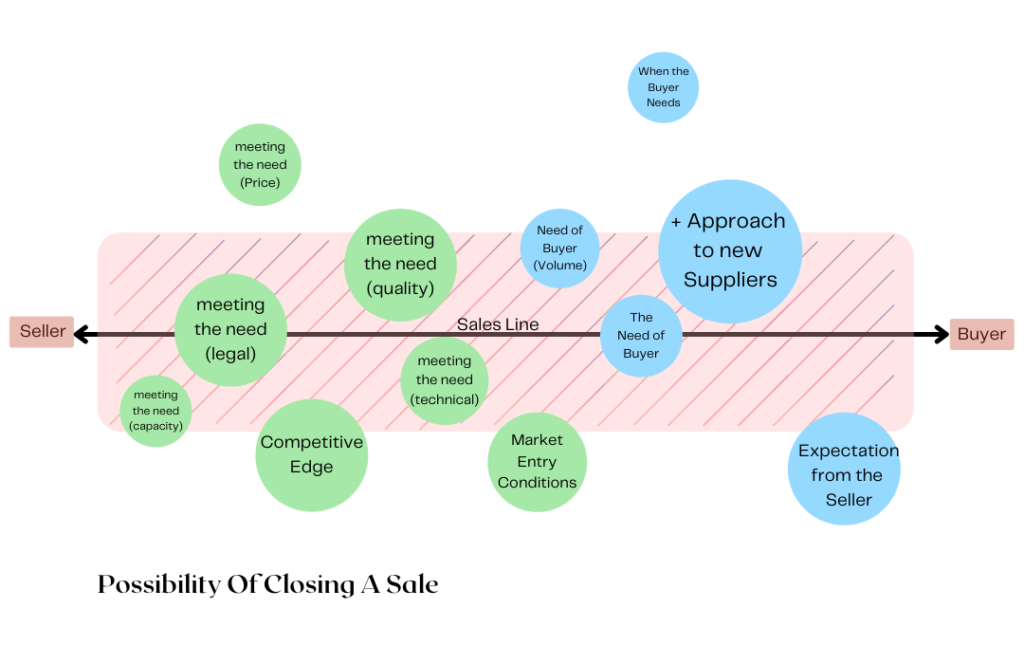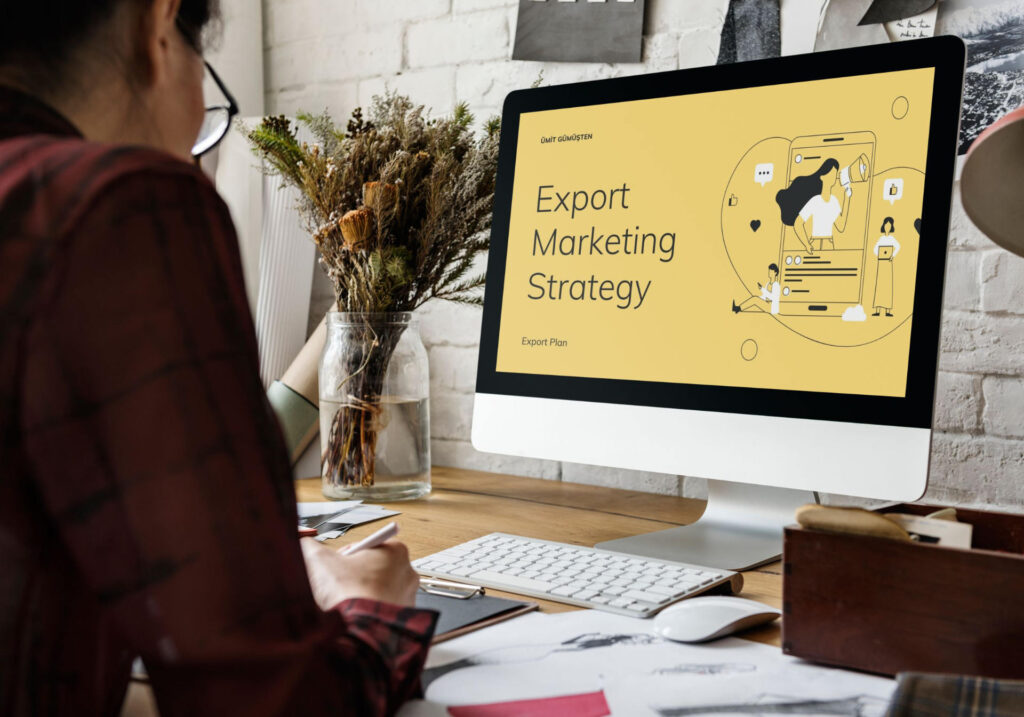Of the conversations I’ve had with smes about failing to go global, I hear these 3 arguments most commonly:
- We have been trying to export our products for long, but we couldn’t even do one. Our rival who opened last year has already started selling to 2 countries. Moreover, our product is better and cheaper.
- While I can’t sell to the companies in the neighboring country, a lot of others from overseas can. I don’t understand how.
- (This one is my favourite) — I produce my product at my factory, but this broker [name] buys from me and exports to lots of countries.
Me: Why do you think you can’t sell?
Company: We can’t find potential buyers.
Me: Where are the markets for your product?

Company:
- The whole world
- Neighbor countries
- Close regions
Me: On which findings and experiences do you base these views? Why do you think so?
Company:
1- Our competitors sell there.
2- That’s what we heard
3- We did some research
4- We produce a product that everyone uses (eg: mug)
From such conversations, it is very clear that the biggest problem of the manufacturer is not actually not being able to find potential customers, but
- not understanding international trade,
- not knowing exactly what he wants and
- not being able to identify the problem correctly.
When I ask about the reason why they want to export, the main answers I get are as follows;
– To make up for the low season
– To meet cash needs with cash payment
– To compensate for the decreasing domestic demand with exports
– Because our opponent is doing it
Looking at all these motivations, we see that something is missing behind it: vision.

If what you’re doing doesn’t serve a vision, it doesn’t have a projection for the future. It just becomes trade; receive the order, receive the payment, send the goods. There’s nothing wrong with that, of course, if that’s all you want. What I’m asking is; is this exactly what you want? We need an answer to this.
If what you want is for the reasons I have listed above, then you want to save that year, not the future. It would be wrong to say that exports are made from a visionary point of view. As a matter of fact, many exporters who have come to this day without a plan and do not plan for the future are still shipping their containers.
Can anyone export today? Yup. In one way or another, every company can export its products.
The easiest way to export is as follows:
– Exports made through the network
– Exports that start when companies find you on the Internet
– Exports that start with the visit of the companies at the fairs
What they have in common is that they cannot guarantee sustainable exports.
Customers gained in this way can also find other suppliers in the same way and can easily shift to them.
So the question is: Is export the ultimate end or an emergency means to bring you cash?
The important thing here is the intention of the company. Does the company want to internationalize or does it want to compensate for the temporary or periodic slowdown in the company.
I know many companies that started exporting with a motivation far from their internationalization vision and successfully exported for 5 to 15 years. While we see a success to some point here, there are also things that have not been achieved:
- focusing on export only; there is no effort to increase brand awareness,
- no intellectual and property investments for the future,
- no R&D,
- no research,
In short, there is no future projection.
At the end of the day, it turns out that the importing companies have always had a circulation during this period. In other words, none of the customers they did business with were loyal to them. This is a situation of doing business only when needed.
When I ask exporter smes if they have ever made an effort to improve their bilateral relations with their best buyer, the answers I get the most are:
– The company first visited us at our place before placing an order. Since then, we have been working “smoothly” and never came together again.
– We went to visit the company to introduce our company and products. The visit was successful and we started to work. We never met face to face again. Everything is going “fine”.
– We started with them at a trade fair. We still meet from fair to fair.
– Well, do you ever talk on the phone or on skype just to keep in touch?
– Not really
Would you expect such a business relationship to be permanent?
My aim in asking these questions is to find out if what you vision and what you do in real life are consistent.
If you’re happy with the results, who am I to judge?
Once, I was working with a small business that wanted to sell their products overseas. Say the name is Adam. Adam was so ambitious that whatever I told him to do he was ready to do right away. But there was something wrong with him. Although his production capacity was limited and had a few employees, all he wanted was to sell at any cost.
It took 6 months to bring his first customer. He was amazingly good at his work for the first 6 months, but as he kept accepting all incoming orders without checking with the production plan, he started to fall behind the schedule. The problem got even worse when wrong products, delayed shipments and unpaid workers were added.
Long story short, a promising business collapsed due to greed, lack of vision and plan. I call it “promising” because I witnessed its potential.
Being a manufacturer of a product does not guarantee you export.
That you sell a product in your local market does not mean that you appeal to the buyers of that product all over the world.
Let’s say you are a shoe manufacturer. Considering that shoes are worn in all countries of the world, it seems easy to sell shoes to the whole world.
This is both a true and a false argument.
- Firstly, you do not have the capacity to meet the shoe needs of the whole world.
- There are tons of companies that export shoes other than you.
- Shoes are already produced in local markets,
- Each country creates demand in proportion to its market size
- Each country’s economic, cultural and demographic factors and consumer behavior indicates what kind of shoes are in demand, so yours may not be all the rage.
- The shoe importers don’t know you yet
- Country-specific import regulations, rules and trade agreements determine your ease of sale.
Do you still believe that you will sell to the whole world?
Factors affecting sales
To be able to sell a product, you must be in line with the buyer’s buying tendencies. Especially in international trade, the conditions of closing a sale are far beyond attracting the attention and admiration of your buyer.
Factors that determine a firm’s decision to import:
- Distance from exporting country (transport cost and delivery time)
- Trade agreement with the exporting country (taxes and duties)
- Ease of importing from exporting country (tariffs and non-tariff barriers)
- Brand value, prestige, recognition, reliability of the exporter company
- Product feature (quality, uniqueness, function, brand)
- Service quality of the exporter (convenience in support, payment options and ease of communication)

As in the example above, the closer the criteria to the sales line are, the more you get the chance of selling to the prospect.
Do you always have zero chance of selling to a company against an advantageous competitor?
Depending on the circumstances and conditions affecting it, you have a high or low chance of exporting to a company.
For example, saying “For a Chilean fabric manufacturer, importing thread from Mexico is more advantageous than making it from India” is a generally accepted argument based on the evaluation of external factors. Yes, you may be in a disadvantaged position as a country in terms of geographical distance, not having an FTA, cultural distance etc.
However, these factors are not absolute and there is always the possibility of selling according to the strategy you will develop against these conditions.
On the other hand, when it comes to international relations, you never know when and where the wind will blow. A political crisis may occur out of the blue, and customs duties may be increased in the advantageous country, non-tariff barriers may be put into action, or a free trade agreement may be signed with your country.
It is quite natural for the wind to change direction in international relations, and being ready for such changes will bring you customers.
Even if there is no dispute between governments, you can still beat the competition with your offering which may be a tempting pricing for a certain time or whatever it is that you can do as part of your penetration strategy.
Being an old or new company does not affect your export success that much
As a company that has been operating for years, you may have difficulty understanding it when you learn that a newly established competitor has started exporting in a short time.
Whereas, when you ask the firm how they did it, their probable answers will be similar to those of other successful exporters:
– We invested in research,
– We invested in promotion,
– We invested in product development,
– We invested in bilateral relations,
– We invested in our brand,
– We invested in our people,
– We stood behind our product and adopted a solution-oriented approach
As you can see, the secret is that there is no such thing as a secret.
It is obvious that running an export business requires a certain budget. Yet, you can do it with a small budget to some extent, but never without blood, sweat and tears.
Bottom Line
As a business, first decide what you want.
Then honestly answer yourself why you want to do it. Do you have a dream or are you looking for a way out of your current situation in export?
Don’t compare your chapter 1 to other’s chapter 20
There is no shortcut to success. Invest in everything that helps you keep going and grow.
If we are talking about a brand that will live for generations, it is the process that matters, not the destination. Go with the goals that enrich the journey of your living brand.














